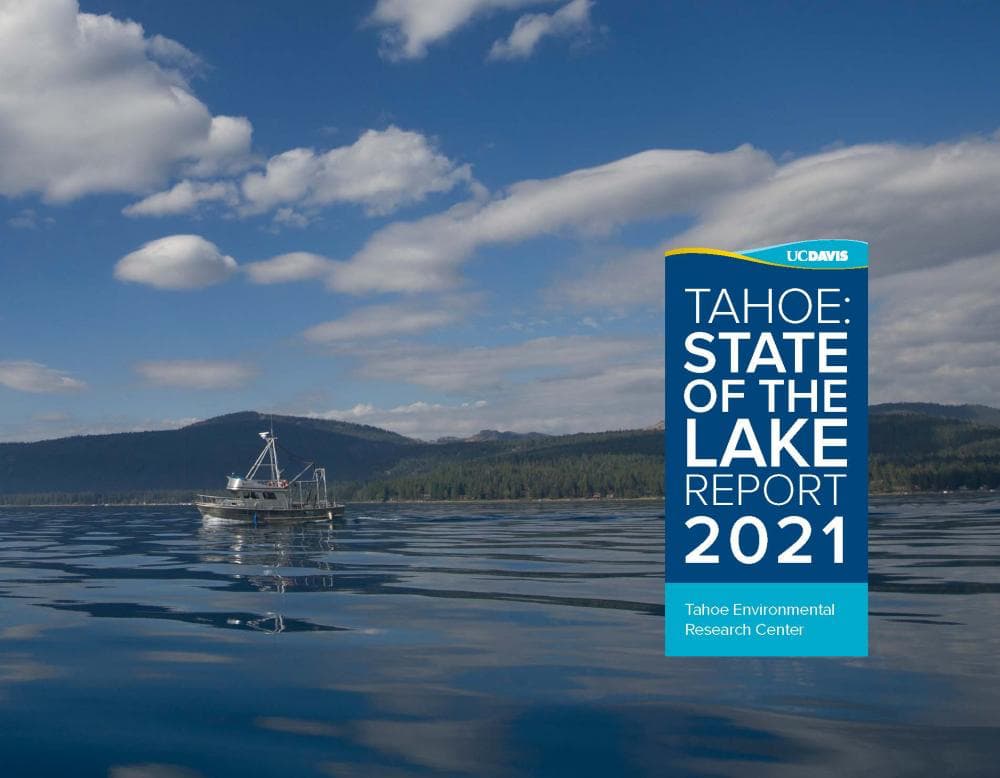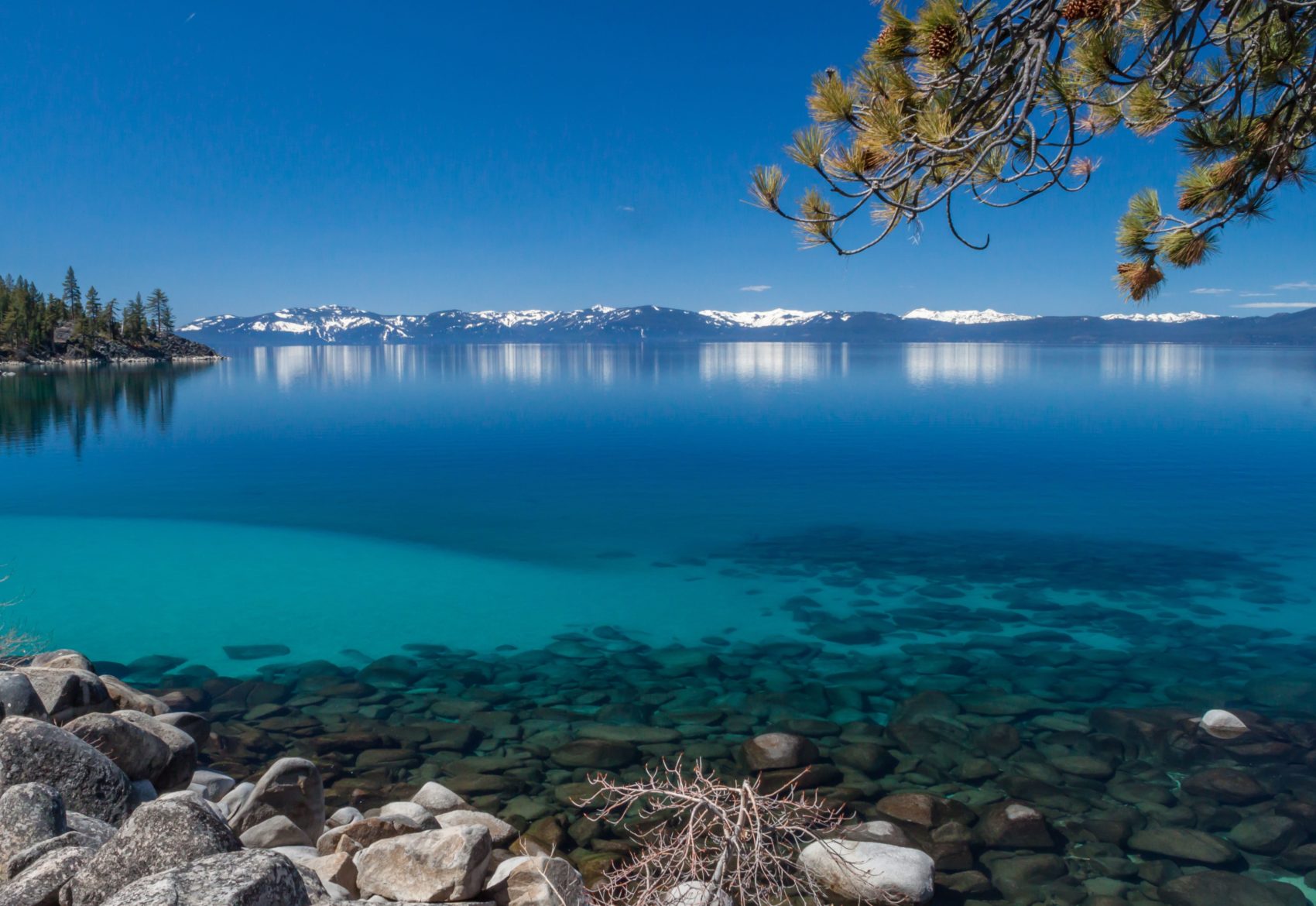
The UC Davis Tahoe Environmental Research Center, or TERC, released its annual Tahoe: State of the Lake Report last week. The report informs nonscientists about important factors affecting the health of Lake Tahoe and provides the scientific underpinnings for ecosystem restoration and management decisions within the Lake Tahoe Basin.
The report summarizes data collected during 2020 in the context of the long-term research record at Lake Tahoe. UC Davis researchers have been continuously monitoring the lake since 1968.
Some highlights of this year’s report:
Weather and climate change
Climate change is evident in the long-term meteorological measurements at Lake Tahoe, with rising air temperatures and rain replacing snow. Research also shows that climate change will have even larger impacts on the lake in the coming decades, including warming temperatures, changes in peak streamflows, and effects on mixing and stability of the lake’s waters. Peak streamflows could increase up to three times their historical flow rates due to the loss of snowpack storage and the increasing frequency of rain. This could result in lake levels rising at unprecedented rates, up to 10 inches per day. Such increases may present risks to downstream communities if they result in uncontrolled releases from the outlet at Tahoe City.
2020 was a relatively warm year. The annual average maximum temperature was 58.2 F, an increase of 3.2 F from 2019. The 2020 annual average minimum was 32.4 F, which was 0.9 F warmer than the previous year. Precipitation, measured at Tahoe City, was below the long-term average at 20.1 inches. The low values of 2020 came after just four years of average or above-average precipitation. Snow represented 45.1% of the 2020 total precipitation.
A dry winter led the lake level to fall by almost 2 feet from January to December 2020. The lake will likely fall below its natural rim by October this year, at which point Lake Tahoe water will cease to flow down the Truckee River.
The average lake surface water temperature was 52.8 F in 2020, warmer than in 2019. The lake has shown a warming trend of 0.38 F per decade since 1968.
One consequence of climate change is the increasing vertical stability of the lake’s waters, leading to stagnation of the deep water. During winter, surface water cools and sinks, mixing oxygen and nutrients in the lake. In summer, the water forms vertical layers with less mixing. In February 2020, the maximum mixing depth was just 476 feet (less than half the average depth of 1,000 feet). Since 1968, the amount of time the lake is in its stratified “summer”-state has increased by a month.

Clarity
The lake’s average clarity, measured by the depth at which a white Secchi disk can be observed, was about the same as the previous year at 63 feet, as reported recently. Clarity peaked in February at over 80 feet and was at its lowest in May, about 50 feet. While the average clarity of the lake has been relatively stable over the past 20 years, there is a long-term trend of reduced summer clarity.
Wildfire
While there were no significant wildfires in the Tahoe Basin itself in 2020, the lake was impacted by the fires of August and September that blanketed much of the western U.S. in smoke, producing hazardous air quality with high levels of inhalable PM2.5 particles. Measurements showed that sunlight and UV radiation levels were far below their usual values because of the shield of thick smoke during this time. The UV radiation decreases, the reduction of sunlight and the introduction of nutrients, toxic chemicals, and other materials in smoke and ash can alter the tiny floating plants and animals that form the basis of the food web in the lake.
Researchers from TERC, along with collaborators at the University of Nevada, Reno, and Crater Lake National Park, have been funded by the National Science Foundation to research the impacts of direct particle deposition from the 2020 fires on lakes in the western US. The ongoing research looks at over 20 lakes of different sizes, latitudes, and altitudes to explore the problem.
A changing nearshore
The nearshore is where streams and drains enter the lake and also where most recreation takes place. It’s a place where conditions can change rapidly and people are most likely to perceive changes in the lake.
Researchers have found that metaphyton, unattached mats of green, filamentous algae at the lake bottom close to shore, have increased over time. The increase is associated with the introduction of Asian clams to Lake Tahoe. TERC scientists and collaborators are quantifying the changing extent of metaphyton as well as the evolving species. Climate change is also expected to increase the extent and duration of algal blooms greatly.
The State of the Lake Report also includes summaries of current research projects and outreach and educational efforts, as well as comprehensive data on weather, physical properties, clarity, nutrients and particles, and biology of Lake Tahoe.
The report’s production was funded by the California Tahoe Conservancy, Tahoe Fund, Tahoe Regional Planning Agency, Tahoe Lakefront Owners’ Association, Nevada Division of Environmental Protection, Lake Tahoe Marina Association, Parasol Tahoe Community Foundation, League to Save Lake Tahoe, Tahoe Water Suppliers Association, TruePoint Solutions, and Incline Village Waste Not program.